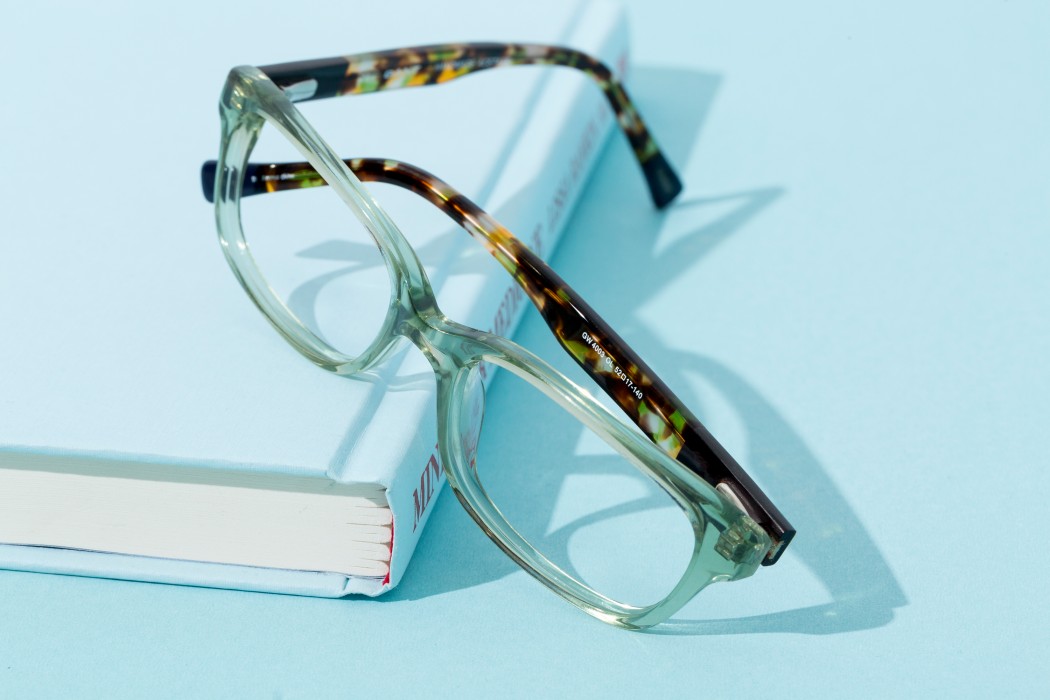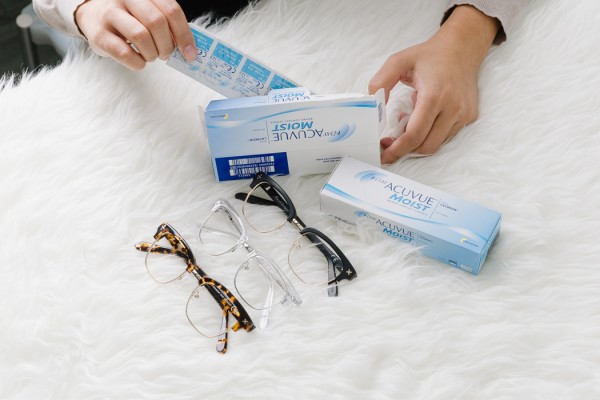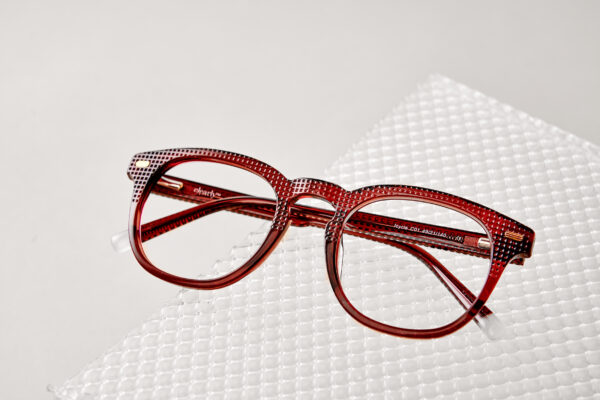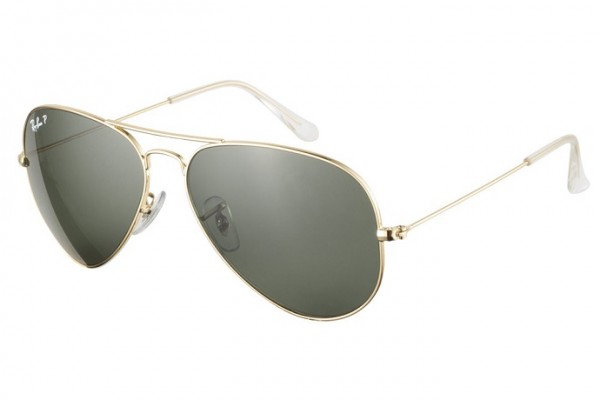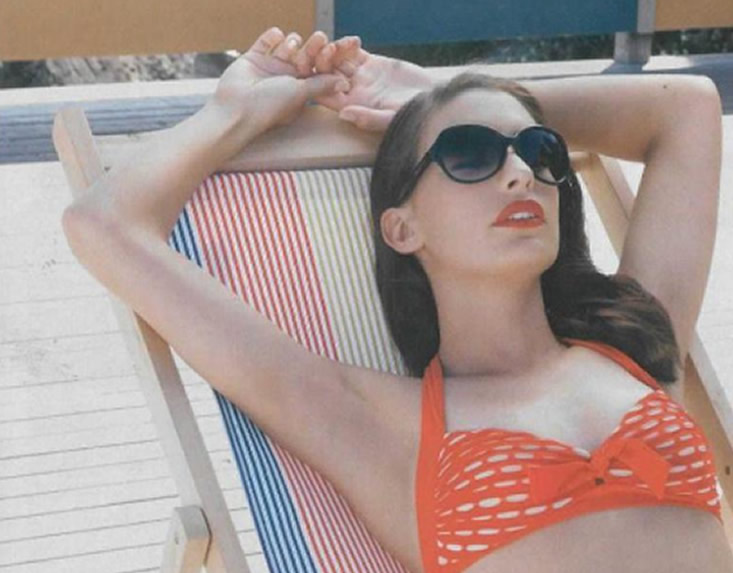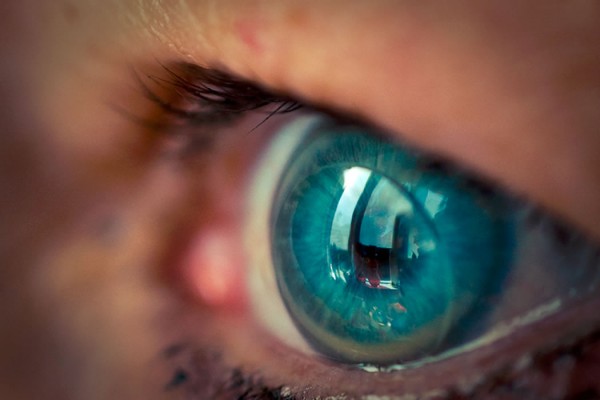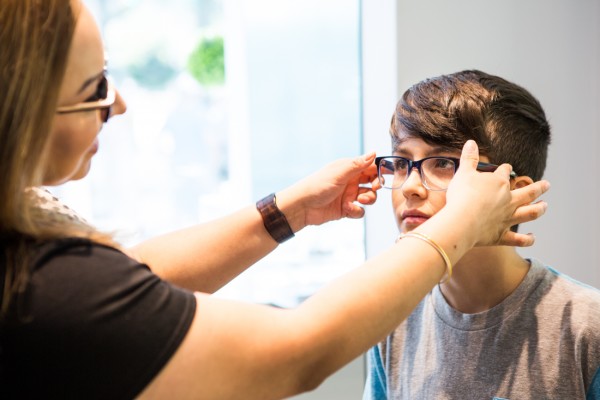Even if they’re fashionable now, the ubiquitous thick plastic glasses were the bane of many a mid-century teen’s existence. Fast-forward 50 years and you find yourself in a world of endless frame shape possibilities. But since not every shape works for every prescription, being armed with the knowledge of which style offers you the best vision helps to ensure that you’ll see clearly and look great.
Below, we offer tips and tricks on how to pick the perfect pair of frames to fit your unique correction needs:
High Negative Power

Many single vision glasses wearers are near-sighted: meaning that they can see well up-close, but have trouble focusing into the distance. In order to sharpen distance vision, these lenses are thin at the midpoint and thick at the outer edges. In an over-sized plastic frame, this lens type can create the classic “coke bottle effect” where a thick lens peeks out of the sides of the glasses.
The coke bottle conundrum can be solved simply by choosing a shorter, narrower frame. Chunky plastic Retro Wingtips and large Rectangles, along with rimless and semi-rimless frames give thicker edges more prominence, but a smaller frame shaves off that unsightly outer perimeter and leaves you with a cleaner, lighter pair of glasses.
High Positive Power
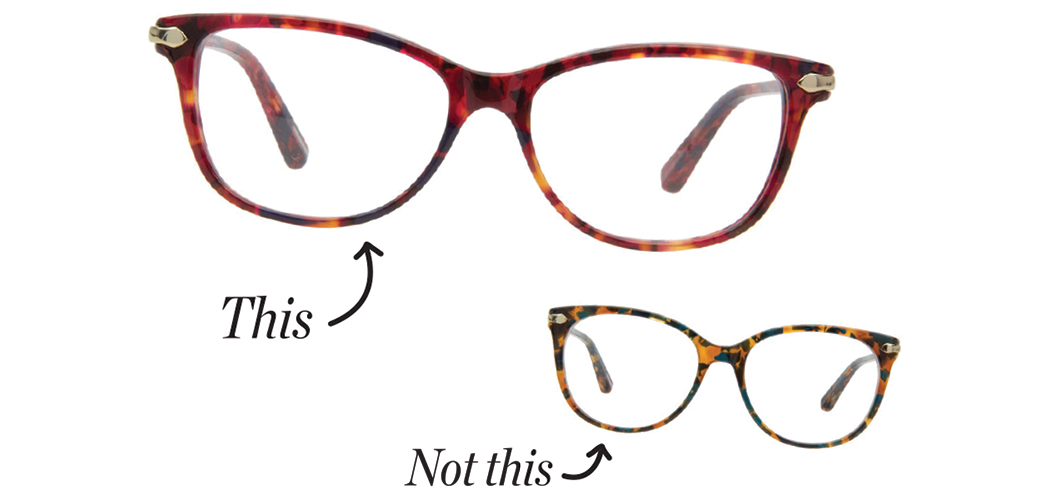
A high positive power is for those who can see well into the distance but need help focusing up-close. These lenses are thickest at the midpoint and thinner at the edges, which can result in a bug-eyed effect where the wearer’s eyes are magnified and the sides of the face look diminished.
A quick fix is to avoid big lenses that allow more room for that distorted magnification. Instead, shorter and narrower frames will minimize the effect while offering you sharper and more defined vision. Due to the thinner outer edges of the lens, rimless and semi-rimless frames are also discouraged for this prescription type.
Progressive & Multifocal
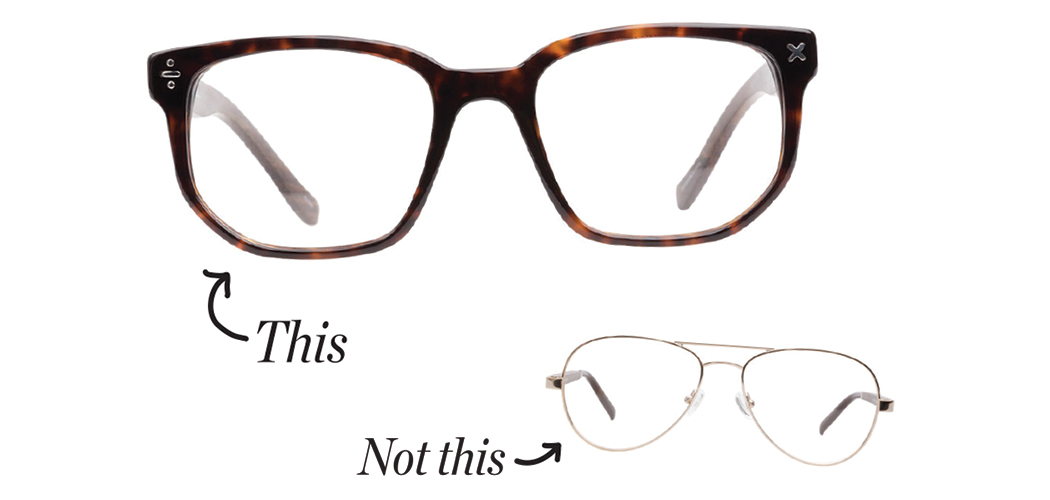
When you have anywhere from two to three different prescriptions in a single lens, you need to ensure that each parameter has enough room to breathe on its own. Oftentimes progressives wearers know to choose a big frame with a tall lens — specifically a lens at least 28mm in height — but there are other potential pitfalls that are less well known.
The two frame styles that progressive wearers want to avoid are Aviators and Cat-Eyes. The reason for this is simple: both frame types put you at risk for cutting off the bottom portion of the prescription, resulting in a loss of reading vision.
The fix here is to aim for shorter frames with rounded edges — horn-rimmed, retro wingtip, circular, and oval frames are all ideal. These enable the full range of prescription without cutting off reading, and without stretching the distance or computer corrections to distorted levels.
The Take-Away
In the end, if you have a particularly strong or multi-focal prescription, a narrower lens is usually your best bet, whereas big thick plastic frames and rimless styles are better left alone.

